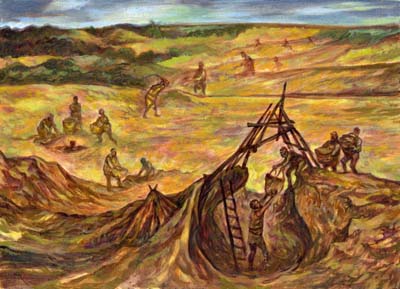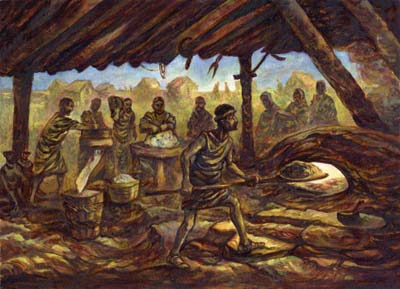Agriculture
The inhabitants of “Stari Vinogradi” undoubtedly cultivated the land during all periods.
In the Classical period this is best testified to by numerous storage pits slide 37, 38, 39, 40, 41, 62, 63 for storing food, which is presumed to have consisted mostly of grain. The storage pits vary in shape (cylindrical, pearshaped, barrel-shaped, tubular) and dimensions. The diameters are from 1-2m, and are dug in to the depth of 1-3 m.
Picture 2/1: Storing grain in a storage pit after harvest. Picture 2/13: Grinding of wheat and making of breadImmediate proof of the presence of grain is found in the imprints of grain in parts of the dishes made by kneading, with additives in the facture. This mostly refers to the late Classical pottery, because there are very few such finds in the 1st century. The finds of grinding stones for the grinding of wheat are certainly related as well photo 76, 129.The storage of foods in storage pits continued during the Middle Ages and later as well, so that we have storage pits from the 17th century as well in “Stari Vinogradi” slide 133. The cultivation of land in the Middle Ages is directly testified to by part of a steel spade photo 179 found in a house from the 9th-10th century.


